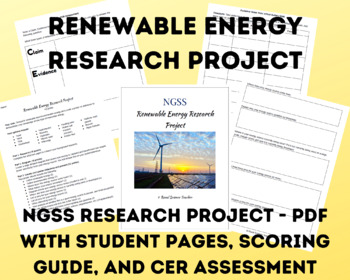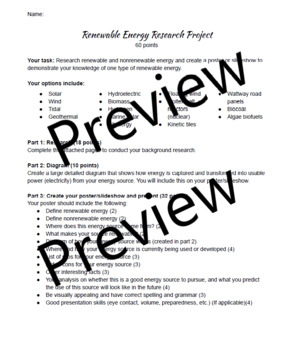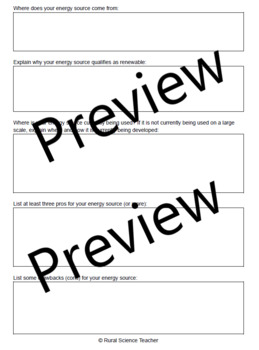Renewable Energy Research Poster Project - PDF & Easel Version
- PDF
- Easel Activity
What educators are saying
Description
* This is the PDF version. I also have an EDITABLE Google Doc version of this product. See my store.
Give your students the opportunity to research and present about a renewable energy source that is interesting to them! This project includes options for many of the common renewable energy sources but also includes some new cutting edge technologies.
This product includes:
-A student instruction sheet and scoring guide
-Three guided student research pages and student diagram page
-Audience note pages
-CER assessment to be used after the presentation
I typically allow two weeks for this project.
Students will complete research and the preparation pages, then create a poster following the guidelines. I have students create a trifold poster board but any type of poster will work. This could also be done as a Google Slide presentation. I use this with an NGSS Physics class and have always gotten amazing quality presentations from this assignment! It would be perfect for Earth or Environmental Science as well.





